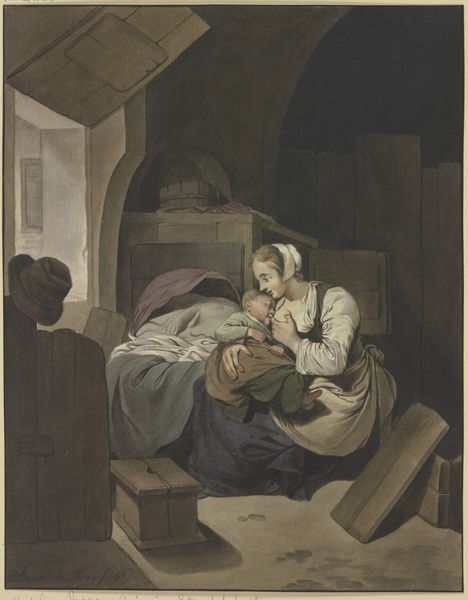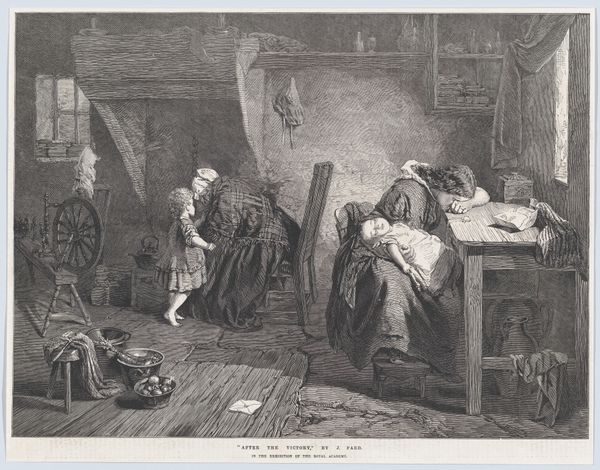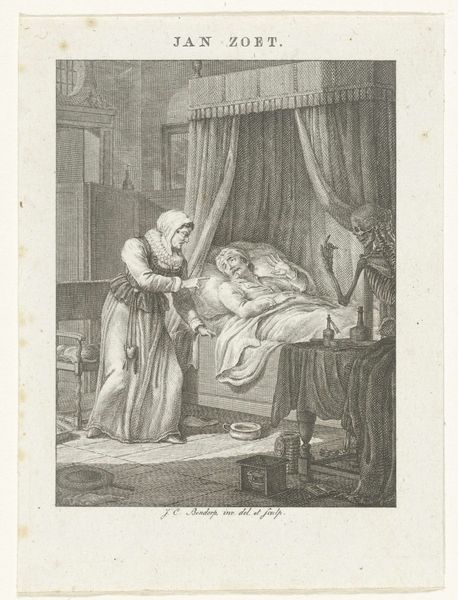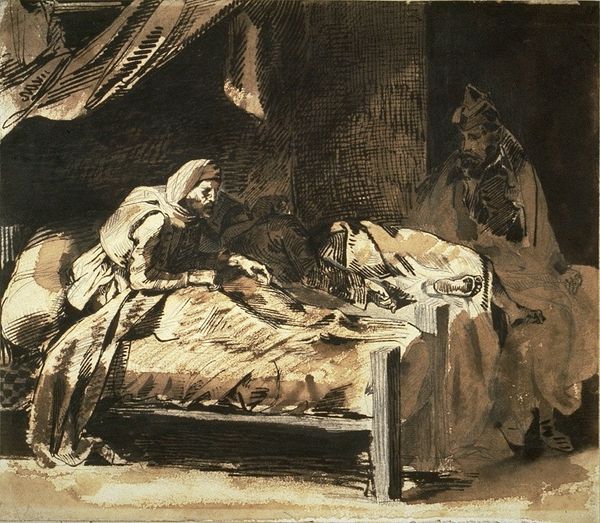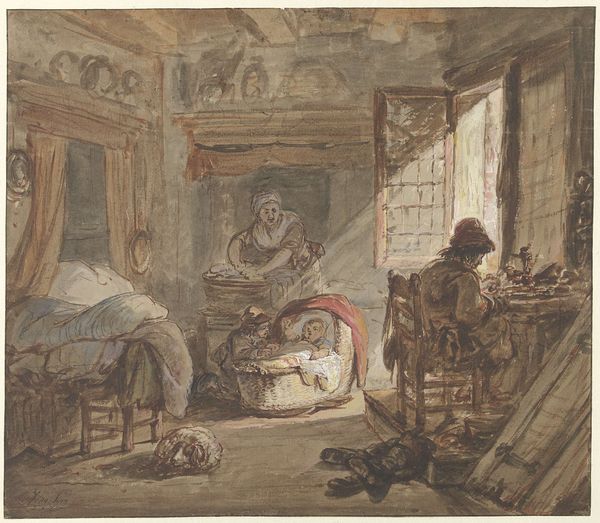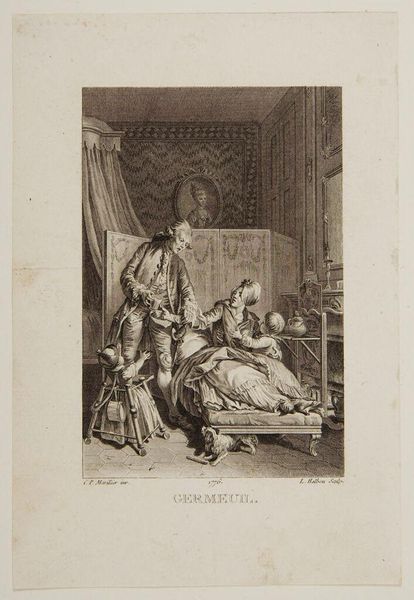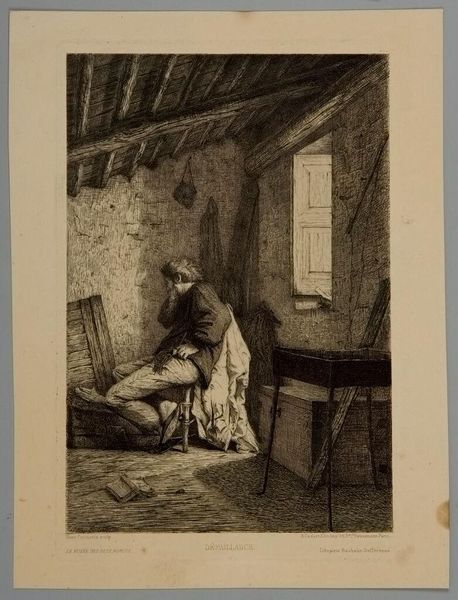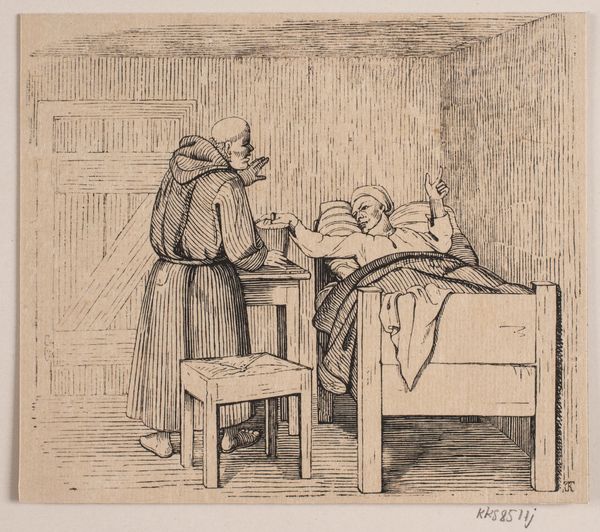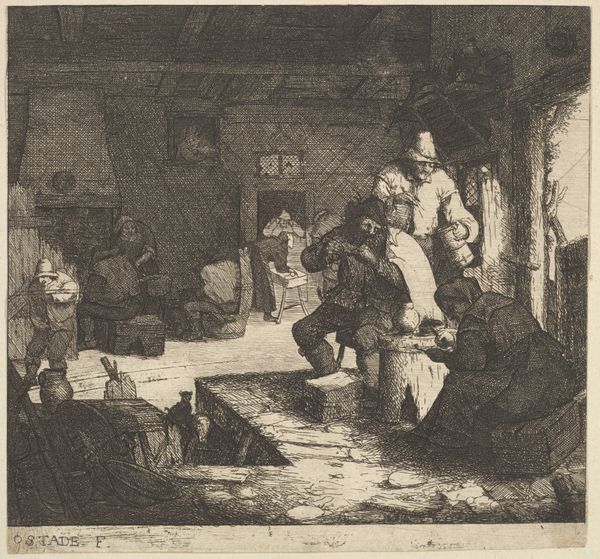
Dimensions: height 147 mm, width 236 mm
Copyright: Rijks Museum: Open Domain
Curator: This is Diederik Franciscus Jamin's "Mother and Child at the Sickbed of a Child," executed in 1862 using pen, watercolor, and charcoal. Editor: It strikes me immediately as an image steeped in melancholy. The muted palette contributes to the somber mood, as does the almost claustrophobic sense of space. Curator: The intimate setting and vulnerable subject matter echo Romanticism's preoccupation with interiority and the domestic sphere. Notice how Jamin uses watercolor washes to create a sense of emotional depth. Editor: Yes, but observe how he manipulates light. The light from the window highlights the stark geometric shapes of the room, contrasting the flat picture plane and shallow depth, further intensifying the overall feeling of compression. The almost careless execution creates an almost modern appeal. Curator: Considering the symbolic weight of the bed, we could see this as a depiction of mortality's looming presence. The mother, her head bowed, symbolizes grief and worry—a visual trope repeated across cultures and artistic periods when portraying familial distress. Editor: While I recognize the symbolic reading, I'm more captivated by the structural oppositions. The solid shapes of the furniture and people act as counterweights to the airy wash of the watercolor, resulting in dynamic interplay between solidity and transience, akin to the sickbed’s oscillation between hope and dread. Curator: Indeed, the bed holds profound symbolic power—simultaneously a place of healing and, tragically, often the site of final passage. Perhaps the drawing reflects a larger cultural anxiety of infant mortality rates during that period? Editor: Possibly, yet the careful rendering also demonstrates Jamin's mastery of capturing not just sentiment but form, the architectural composition as relevant as its ostensible narrative elements. The angular composition of this interior strikes me more than anything as an example of high formalist study. Curator: A compelling idea; however, my focus continues to revert toward themes and cultural memory. Perhaps a fruitful exercise would consider how shifting beliefs about health and medicine may impact such intimate portrayals over time. Editor: Perhaps you're right. I leave feeling unexpectedly challenged by my notions about sentimentality in the face of this particular assemblage of light and angles, domestic space and maternal bonds.
Comments
No comments
Be the first to comment and join the conversation on the ultimate creative platform.


